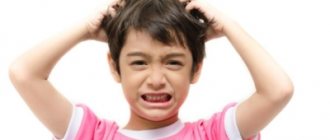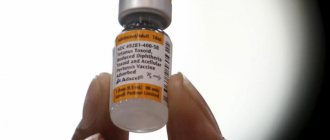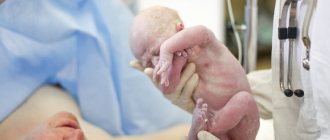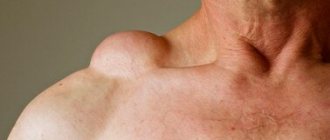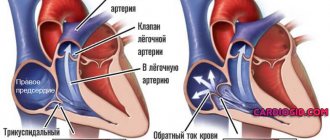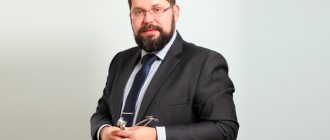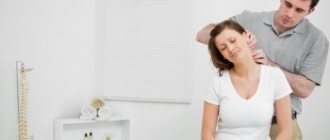Pediculosis - symptoms and treatment
Hospitalization for pediculosis is not carried out except in cases where there are special indications: unfavorable sanitary and hygienic living conditions, inability to independently provide the necessary therapy. Treatment is carried out at home. Isolation of the patient is necessary, as well as anti-epidemic and pest control measures.
Treatment of pediculosis is aimed at destroying the pathogen at all stages of the life cycle. When prescribing treatment, the patient must be explained how to use the drug (method of application, exposure time, frequency of treatments). If the recommendations are not followed, there is a high risk of treatment failure, as well as the development of lice insensitivity to drug therapy. In case of body lice, treatment of patients and their belongings must be carried out by special licensed disinfection organizations. To disinfect premises, furniture, as well as linen, clothing and bedding, pediculicidal agents are used in an aerosol.
Three methods are used in therapy: mechanical, physical and chemical. Additional treatment methods are required if complications develop.
The mechanical method of lice removal is suitable for single individuals. In this case, a special comb with fine teeth is used (the distance between the teeth is 0.2-0.3 mm). How to use:
- Wet and comb your hair to prevent tangling (you can use hair balm or conditioner before doing this).
- Place the comb so that its teeth touch the scalp. Comb all hair at least twice. After each combing, you need to inspect the comb and be sure to treat it with boiling water or a 70% alcohol solution [16].
To make it easier to comb out nits the day before, it is recommended to apply Vaseline oil or a combination preparation containing coconut, anise and ylang-ylang oils to your hair [17].
Evidence evaluating mechanical removal as an alternative to pediculicidal therapy is limited and conflicting.
The physical method involves killing lice using high or low temperatures. In everyday life, they use boiling laundry and ironing clothes with a hot iron. Items that cannot be washed can be processed in steam-air-formalin, steam and combined disinfection chambers and in air disinfection chambers. These methods are considered quite effective.
The chemical method is based on the use of pediculicides - drugs designed to kill lice. There are products in the form of lotions, shampoos, soaps, emulsion concentrates, aerosol products, etc. The following are used in treatment:
1. Pyrethroids:
- Permethrin 1% cream rinse or 5% cream. Sold without a prescription, it is a reasonable first choice drug for the treatment of head lice unless resistance to it has been proven. Apply the product to towel-dried hair and rinse with warm water after 10 minutes. Approved by the FDA (Food and Drug Administration) for the treatment of lice in adults and children over 2 months of age. The drug does not act on nits, therefore, after 7-10 days, repeated treatment is recommended to destroy lice that have not yet hatched at the time of the first treatment. A third treatment on days 13-15 may be required to remove surviving and hatched lice nymphs.
- Pyrethrins/piperonyl butoxide (gel, shampoo, solution for external use) applied to dry hair for 10 minutes may be effective, but there is emerging evidence that lice are resistant to these drugs [18]. In this case, it is recommended to use alternative agents with a different mechanism of action.
2. Organophosphorus compounds (OPS):
- Malathion 0.5% solution. More effective than permethrin. Apply to dry hair and wash off with shampoo after 8-12 hours. Approved by the FDA for the topical treatment of head lice in adults and children over 16-18 years of age. May be recommended if permethrin resistance is suspected. Kills 88% of lice in 10 minutes and 100% of lice in 20 minutes [19].
- Fention. As an active ingredient, it is included in preparations either alone (20%, 24%) or in combination with permethrin (total concentration - 10%, 20%); According to the manufacturers' instructions, the concentration of the working emulsion ranges from 0.1% to 0.25% [20].
3. Benzyl benzoate 20% is included in anti-lice preparations in the form of a spray (exposure time - 30 minutes, single treatment) and in the form of lotion (exposure time - 10 minutes, single treatment). Benzyl alcohol 5% is effective in eliminating live lice. Apply to dry hair for 10 minutes once a week for 2 weeks. FDA approved for the treatment of lice. The most common adverse reactions include itching, erythema (limited redness of the skin) and eye irritation [21].
4. Polydimethylsiloxanes (dimethicones) are synthetic silicone oils that are highly safe and effective against lice. Available in lotion and spray form. Dimethicone blocks the respiratory system of lice, causing them to die. There is evidence that dimethicones are also effective against nits [28]. It is necessary to apply the lotion to dry hair from base to ends and to the scalp, let the hair dry naturally, leave for 8 hours (or overnight), then rinse with regular shampoo. Repeat the course of treatment after 7-10 days. Dimethicones are also used in the form of shampoo containing clearol mineral oil (69.25%). The shampoo is kept for 10 minutes, re-treatment is carried out after 7–10 days [22].
5. Isopropyl myristate (isopropyl myristate) is used in the form of a liquid that contains a mixture of isopropyl myristate (50%) and cyclomethicone (50%). The drug is applied for 10 minutes, after 7-10 days the treatment is repeated [23].
6. Anise and clove essential oils are considered a fairly effective method of treating head lice. They are used in the form of an alcohol lotion and left for 30 minutes. A single treatment is sufficient [24].
Treatment of pregnant and lactating women
For this group of patients, in the case of head lice, it is allowed to prescribe a permethrin solution prepared from a 5% emulsion concentrate in ethanol, or a lotion containing 4% dimethicones.
Treatment of children
Most anti-lice medications are approved for use from 5 years of age. Exception:
- 1% permethrin-based gel is approved for use in children from 1 year of age. The gel is kept for 40 minutes, a single use is enough.
- A drug containing a mixture of malathion and permethrin (0.5% and 1%, respectively) and the synergist piperonyl butoxide (4%) is approved for use from 2.5 years. The drug must be kept for 10 minutes, a single treatment is required.
If you have a concomitant allergic disease (atopic dermatitis), it is recommended to consult a dermatologist for individual selection of the drug.
If eyelashes are damaged, lubricate them with Vaseline 2 times a day for 7-8 days or use eye ointment with physostigmine 2 times a day for 1-2 days.
Treatment of pediculosis complicated by secondary bacterial infection
External therapy is used: drying with any antiseptics (solutions of aniline dyes, povidone-iodine, etc.). Local or systemic antibacterial therapy is administered as prescribed by the doctor.
Oral medications are not FDA approved for the treatment of head lice, but are sometimes used to treat difficult to remove head lice:
- Trimethoprim-sulfamethoxazole 5 mg/kg twice daily in combination with permethrin may increase the cure rate.
- Oral ivermectin 400 mcg/kg, repeat dose after 7 days
It is not recommended for treatment:
- Use Vaseline, vinegar, mayonnaise, butter or margarine, and vegetable oils. Lice are able to close their airways, preventing oily substances from entering them, and open them again when the substance is washed away. Treatment with these substances is not able to kill a significant number of lice [25].
- Blow-drying your hair using hot air can cause lice to become airborne and spread to other people.
- Shaving your head (effective, but not practical)
- Use flammable or toxic substances such as gasoline or kerosene [26].
- Use vinegar, acetone, bleach, vodka and WD-40. These substances negatively affect the hair and scalp and inhibit the therapeutic activity of permethrin.
- Use dye sprays that color insects and nits in bright neon colors. Such products do not kill lice; in addition, they reduce the effectiveness of permethrin. Not recommended by the National Lice Association due to lack of research on safety and effectiveness.
Preventive measures
The list of recommendations for the prevention of head lice in adult patients includes the following rules:
- strict adherence to personal hygiene provisions;
- systematic monitoring of the health of the child and older family members;
- periodic treatment of wardrobe items and bed linen against pediculosis at high temperatures;
- isolation of sick family members;
- regular preventive use of anti-lice products;
- refusal of casual sex.
To protect your child from lice infestation, you must:
- carefully monitor his health;
- teach basic hygiene rules, prohibit using other people’s personal belongings;
- take care of a neat hairstyle;
- Carry out regular inspections for head lice in order to promptly detect the causative agents of the disease.
If the diagnosis is beyond doubt, you should immediately begin a course of treatment. This will help you get rid of unpleasant symptoms and avoid infecting others.
Diagnosis of pediculosis
If an itchy rash is found on hairy areas of the body, then pediculosis should be excluded. All persons seeking medical care and undergoing routine medical examinations should be screened for head lice.
The diagnosis of pediculosis is made on the basis of the clinical picture - a visual examination and the results of a parasitological study.
During a visual inspection, adult lice can be seen with the naked eye or a magnifying glass. Insects are easier to spot after they have been drunk on blood. In pubic pediculation, lice appear as gray and brown spots at the root of the hair. Lice are completely motionless, but when they try to tear them off, they show signs of life and cling even more actively to the hair, from which it is very difficult for them to tear themselves away. To separate the lice, you need to pull the tweezers over all the hair. Most likely, there will be nits that are firmly attached to the hair. Nits are sometimes confused with curled hair or hair knots and dandruff in seborrheic dermatitis and dandruff. To confirm the diagnosis, microscopic examination of the hair is necessary.
Differentiated pediculosis requires differentiated pediculosis:
- pyoderma;
- Microbial eczema;
- Neurodermatitis;
- Seborrheic dermatitis;
- Psoriasis;
- contact dermatitis.
List of sources
- Lysenko A.Ya., Vladimova M.G., Kondrashin AB, Majori J.. Clinical parasitology. Under the general editorship of Lysenko A.Ya. Management. Geneva, WHO: 2002.
- Delyagin V.M., Rumyantsev A.G., Shugurina E.G. Scabies and pediculosis: old problems in new times // Medical business. 2007. No. 4.
- Lopatkina Yu. V. Modern antiparasitic therapy for pediculosis // Clinical dermatology and venereology. - 2010. - No. 2.
- Clinical recommendations. Dermatovenereology / ed. A. A. Kubanova. M.: DEX-Press, 2007.
Head lice
Head lice are grayish-yellow or transparent insects, their size reaches 4 mm. Head lice always parasitize mainly on the temples and on the back of the head, and from there they penetrate to other areas of the head. Over the course of a month, lice can lay ten nits (that’s what lice eggs are called). After 8-10 days, lice larvae emerge from the nit. After ten to fifteen days, an adult louse grows from the larva, capable of fully laying eggs. A louse can live up to 38 days. Head lice nits are white balls that lice attach to the base of the hair. As a rule, it is the identification of nits that indicates the presence of pediculosis in a patient. Lice eggs are attached in such a way that it is impossible to remove them while washing your hair. It is also very difficult to remove them from the hair. When infected with head lice, the patient scratches the skin vigorously, which leads to the onset of the inflammatory process and, as a consequence, to the manifestation of a secondary infection.
Folk remedies
When there were no modern drugs, pediculosis was treated with kerosene. This product does kill lice, but it is toxic and damages the hair. Therefore, it is not recommended to use it. The same can be said about Dichlorvos, which can not only lead to burns and damage to the hair follicles, but also cause serious poisoning.
There are several folk recipes that can be used as an aid in the treatment of head lice.
- • Remedies such as vinegar solution or alcohol are 60% effective. They dissolve the glue that attaches the nits to the hair. This makes them easier to remove.
- • Tar or dust soap destroys insects. They wash their hair with it and wrap it in a towel for 2 hours.
- • Fresh cranberry juice can be rubbed into the scalp alone or mixed with liquid honey.
- • Effective essential oils: tea tree, lavender, geranium, black cumin. They need to be diluted with burdock oil and made into a hair mask.
Diagnostics
Detecting the disease is not difficult: you just need to examine the hair and scalp. This must be done regularly, as it will be easier to cure it at the initial stage. The main sign confirming the diagnosis is the presence of nits at the base of the hair. They resemble dandruff, but unlike it, they are difficult to remove. And if you crush a nit between your nails, you will hear a click.
Sometimes differential diagnosis is required - if the disease is accompanied by dermatitis, seborrhea, pyoderma or eczema. For this purpose tests are taken. You can also examine the scalp under a Wood's lamp. If there are nits, they will glow.
General information about the disease
Pediculosis is a parasitic disease caused by lice. These are blood-sucking insects that live on the head or body of a person. Depending on this, head lice, body lice and pubic lice are distinguished. These insects have been parasitizing humans for many thousands of years. And despite the advances of medicine, it was not possible to completely get rid of them.
They especially love places where people are very crowded. The most common are head lice. You can become infected with them at school, kindergarten, camp, or rest home.
Lice are small insects, 2-3 mm in size, gray in color. Lice feed 2-3 times a day, while injecting their saliva into the blood, which causes itching and allergic reactions.
A louse lives for about a month. During this time, the female can lay up to 140 eggs, which are called nits. They stick to the base of the hair and are almost invisible. Without humans, the insect can live up to 2 days.
Causes of infection
You can become infected with lice only through contact with a sick person. Most often they become infected in holiday homes, tourist centers, camps, sanatoriums, kindergartens, and hospitals. You can become infected on a train or public transport. In favorable conditions, the louse itself can live on objects for up to 2 days, and its eggs can live for up to a week.
The disease is especially common in women and girls with long hair. An insect can cover a distance of 50 cm in 1 minute. During active children's games, infection also occurs often - insects can simply fall from the head of a sick child onto a healthy one.

